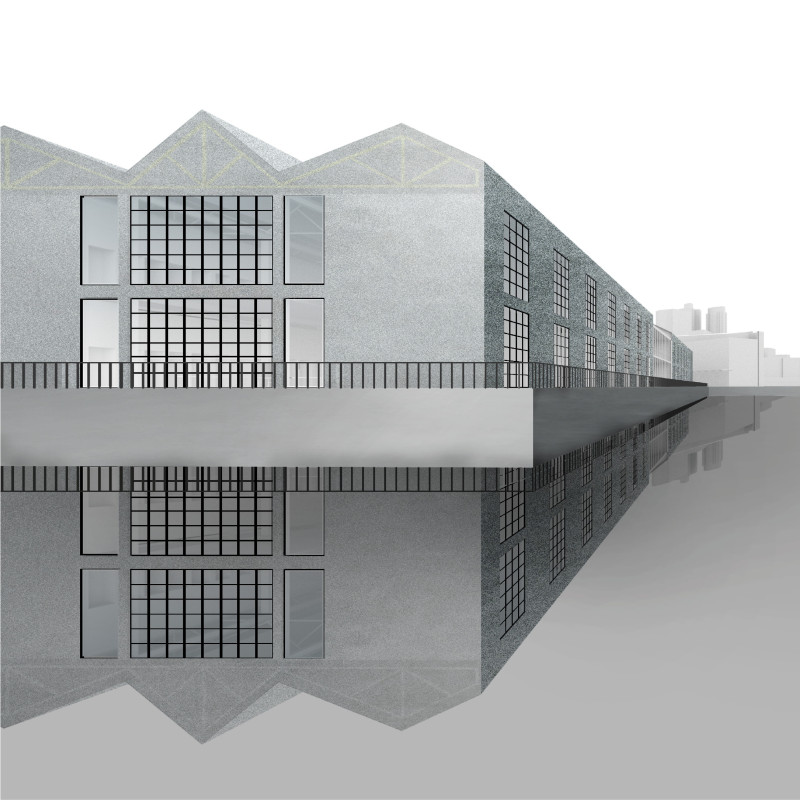5 key facts about this project
The core of the project's design is the multifunctional use of space. The architectural layout incorporates a central communal area that encourages interaction among residents and visitors, with surrounding units designed to maximize efficiency and comfort. The structure exhibits a clear connection between individual living spaces and shared areas, promoting a collaborative environment. Furthermore, the project leverages existing infrastructures, such as piers, to enhance sustainability and reduce energy consumption, reflecting a modern approach to urban planning.
Multi-Functional Living Spaces
A key aspect of "Inhabiting the Wall" lies in its innovative use of walls as productive entities. Unlike conventional housing developments that emphasize separation, this project redefines the wall's role by allowing it to serve multiple functions—providing structural support, housing essential services, and acting as a boundary between private and communal spaces. The 'inhabitable wall' concept aims to eliminate the typical isolation associated with urban living, creating spaces that are flexible and adapt to the changing needs of contemporary residents.
The integration of workspaces within living areas also distinguishes this project from traditional housing models. This mixed-use philosophy encourages residents to operate their businesses from home, thus reducing commuting and offering a seamless living-working balance. The combination of residential and commercial units also supports local economies while maintaining a cohesive community atmosphere.
Sustainability and Materiality
The architectural design emphasizes sustainability through careful selection of materials and the re-utilization of existing structures. Key materials employed include concrete for durability, wood for warmth and visual appeal, glass for maximizing natural light, and steel for structural integrity. This thoughtful materiality not only addresses functional requirements but also enhances the aesthetic quality of the design.
Sustainability considerations inform the entire project approach, as the design minimizes waste and promotes environmental consciousness. By utilizing buildings and materials already present, "Inhabiting the Wall" contributes to a sustainable urban environment while also addressing the pressing need for affordable housing solutions.
For further insights into this project, including detailed architectural plans, sections, and designs, readers are invited to explore the presentation to gain a comprehensive understanding of the innovative ideas and concepts driving "Inhabiting the Wall."


























